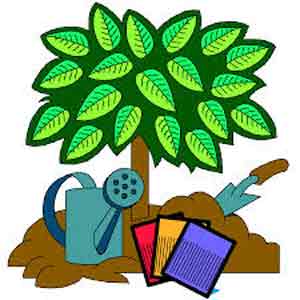COMPOSTING is the process of recycling our household waste such as vegetable & fruit scraps, grass clipping, newspaper and other waste to produce healthy, wholesome, organic fertilizer, which can be used to enhance the quality of soil in your garden or flower pots. This rich fertilizer can produce healthy fruits and vegetables and the most blooming and attractive flowers. Composting is a simple and practical way, of doing our part to preserve the earth by reducing the use of artificial  fertilizers; it also helps to reduce the amount of carbon emission expelled from vehicles used to transport goods from one place to another and waste to the landfill or dumpsite. It also helps in cutting down the cost that each household incurs every time they make a visit to the market.
fertilizers; it also helps to reduce the amount of carbon emission expelled from vehicles used to transport goods from one place to another and waste to the landfill or dumpsite. It also helps in cutting down the cost that each household incurs every time they make a visit to the market.
So how do we reap the benefits of composting? Firstly we need to know how to compost so here are a few tips to help you save money and fortify yourselves, as you save the environment in the process.
Steps to composting
The first step to composting is identifying the area which will be used to make the compost, having done so you must decide if you will compost in a pile or a container? This will be dependent on the amount of yard space available to you, if you live in an area with restricted space a container would be the better option for you. For those who have the available yard space a compost bin or two is a great Idea!!!!!
Fill your bin with a balanced mixture of ingredients
Mix dry brown and wet greens.
The two basic types of ingredients for making compost are those rich in carbon and those rich in nitrogen. Carbon-rich materials, or “dry browns,” include leaves, hay, and straw. Nitrogen-rich materials, or “wet greens,” include kitchen scraps and grass clippings; these work best when used sparsely and mixed in well so they don’t mat down.
Strive for Size
Build the pile at least 4 feet so materials will heat up and decompose quickly. (Your pile shouldn’t be too much bigger than that, or it will be hard to turn.) Unless you have this critical mass of materials, your compost pile can’t really get cooking. Check the pile a couple of days after it is built up—it should be hot in the middle, a sign that your microbial decomposers are working hard.
 Add water as needed
Add water as needed
Make sure the pile stays moist, but not too wet. (It should feel like a damp sponge.) You may need to add water occasionally. Or, if the weather is very rainy, you may need to cover the pile with a tarp to keep it from becoming too soggy.
Turn your Pile
Lastly, you should turn your compost at least once or twice a week to ensure that all ingredients are evenly distributed throughout the pile and that air and sunlight is able to pass through the pile. Doing this helps to eliminate the smell which can develop and this also helps the pile to decompose faster. After all this work in about 6 months to a year depending upon the size of your compost you will have the most rich looking plant fertilizer and when your friends visit you’ll be sure to show off your green thumb!
Good luck in your gardening and remember the environment is everybody’s business, let’s help to preserve it.
Share your ideas and questions by sending letters to: “Our Earth, Our Environment”, C/o EIT Division, Environmental Protection Agency, Ganges Street, Sophia, Georgetown; or email us at eit.epaguyana@gmail.com




.png)









